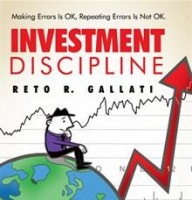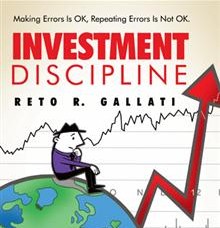 Author: Reto R. Gallati
Author: Reto R. Gallati
Publisher: Balboa Press
Book Review by: Sonu Chandiram
To people new to the stock market, investing is either a mystery or a minefield. Compounding their difficulties and risks is being exposed to conflicting views and suggestions from self-proclaimed “gurus” with no history of consistently high rates of return to substantiate their advice.
One so-called guru suggests “buy” while another warns that you “sell” the stock of a company as he fears its shares will sink further! What is the inexperienced novice to do?
One of the reasons long-term serious investors like Warren Buffett and others have developed a proven record of success is discipline. But discipline can only be acquired once you have knowledge and understanding of the fundamentals of business, such as sales, expenses, earnings, assets, liabilities, shareholder equity, etc. and their relationship to share prices, which determines whether it is risky or not to invest money in a company.
The author Reto R. Gallati lays out in this book 18 lessons he has learned in his long career of investing his money and others’ with successful outcomes, e.g. high rates of return such as capital appreciation and growing dividends. He elaborates on each lesson with topics within it.
For example, in the first lesson “Sharpen Your Investor Profile” Gallati suggests that you look within yourself and identify what your personal objectives and goals are, coupled with a time frame for the attainment of each one.
If for example, one of your objectives is to build up college funds for your child, write down that objective, with a specific amount of money and date for reaching that amount. Don’t worry about being very precise on the attainment date, he says. But write it down.
Then you can jot down your other objectives near and dear to your heart, such as paying off the balance owed on your house, and developing a retirement fund, with amounts and approximate dates to reaching them.
Gallati points out that each of your specific money goals should be on “autopilot, long-term and increasing your wealth.
He continues: “Asset allocation is used to structure the portfolio in a goal-directed manner. The finished plan must be flexible in design (to adjust for economic, political and personal reasons), be based upon reasonable expectations, be simple in structure and operation, and be easy to supervise.
Some of the most important lessons are:
- Learning Makes You an Investment Expert (No.3)
- Understand Your Investments (No.5)
- Think and Act Rational, Not Emotional (No.8)
- Become a Contrarian (No.11)
- Start Early and Invest regularly (No.15)
- Investing Does Not Mean Trading (No.18)
Besides the lessons he lays out and elaborates on – which comprise the bulk of the content in this book – he presents to you a list of 51 rules for success in stock investing. Be sure to read this list and possibly etch them into your mind.
To sop up more information, study the Glossary of terms on investing, read the books listed in the Endnotes and Reference sections, and generally become interested in investing because it’s your money you’re looking to grow, to enhance your security and peace of mind.







